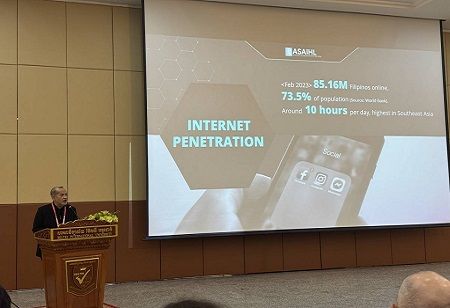- DLSU President Br. Bernard Oca highlighted the digitalization challenges and opportunities in Philippine higher education at the 2025 ASAIHL Conference in Phnom Penh.
- He called for greater public investment in digital infrastructure, regulatory reform, and quality standards for hybrid learning in Southeast Asian institutions.
- Emphasizing the Philippines' strong digital engagement, Br. Oca urged regional collaboration to boost digital literacy and equity across ASEAN education systems.
DE LA Salle University president Br. Bernard Oca, FSC, shared the status of digitalization in Philippine higher education with its challenges and opportunities during the Association of Southeast Asian Institutions of Higher Learning (ASAIHL) Conference 2025, which was recently hosted at Beltei International University in Phnom Penh, Cambodia.
The conference brought together academics, researchers, administrators, and students from all over Southeast Asia and the world to appreciate artificial intelligence, the digital divide, social media, and digital transformation in the perspective of higher education.
Br. Bernie, a sitting board member of ASAIHL and president of the National Council of the Philippines, emphasized the status of internet penetration and utilization in Philippine schools, major digitalization efforts of higher education institutions (HEIs) and DLSU, and long-term suggestions toward a transformative digital strategy.
He mentioned that there is a requirement of public investment in digital infrastructure, a redefinition of procedure and regulation for the deployment of digital learning, and ongoing debate about what learning quality under hybrid modalities appears like.
He finished by stating, "As one of the world's top users of the internet in general and social media in particular, [the Philippines] has no lack of appetite for change. We embrace every chance to engage with like-minded institutions to make Asean more digitally literate and equal".
ASAIHL was established in 1955 and is one of the oldest regional institutions in Southeast Asia. It is composed of 246 member institutions from 25 nations.

